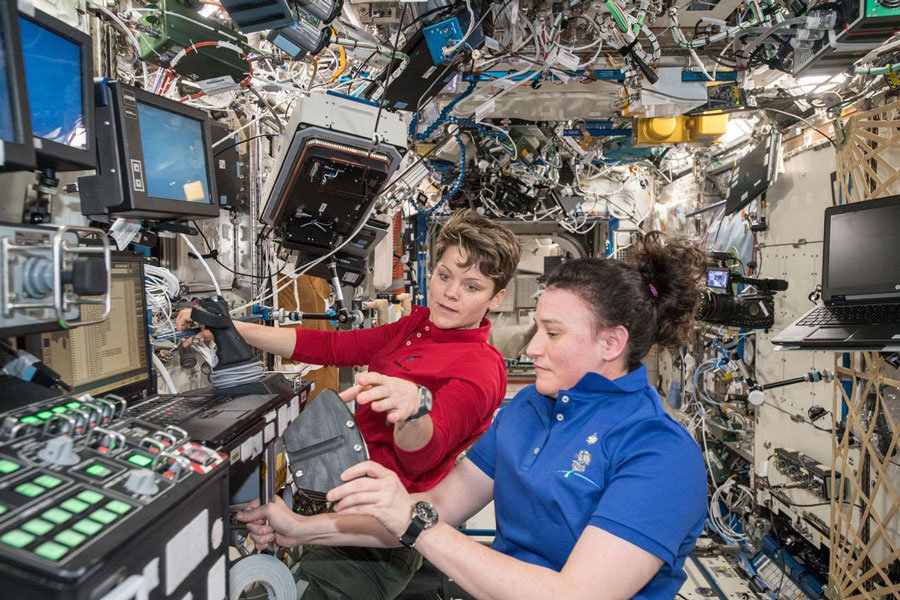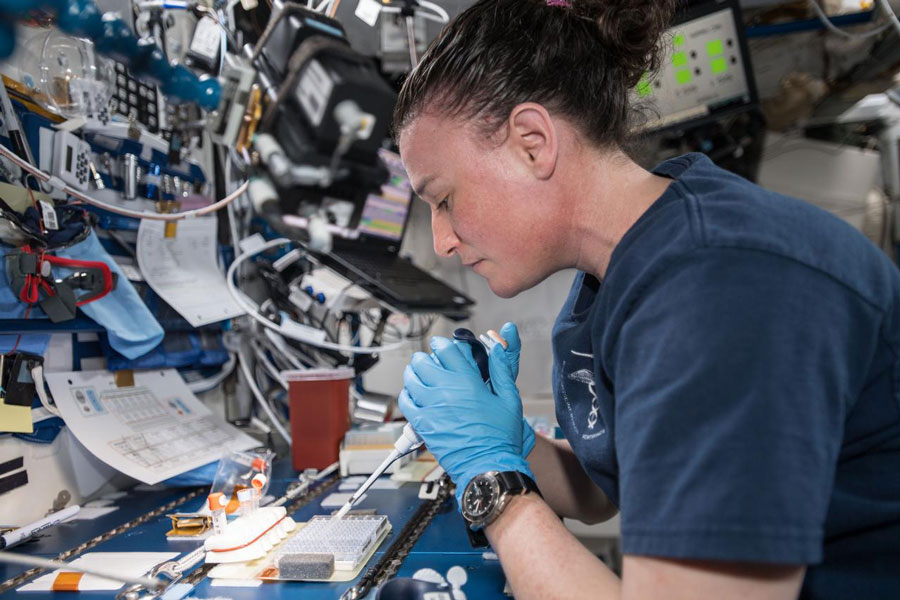Today marks the 35th anniversary of President Ronald Reagan’s State of the Union speech where he tasked NASA with building a space station within the decade. This address propelled the United States toward the next step in space exploration and scientific discovery, and he invited other countries to come together with this common goal:
We can follow our dreams to distant stars, living and working in space for peaceful, economic, and scientific gain. Tonight, I am directing NASA to develop a permanently manned space station and to do it within a decade… NASA will invite other countries to participate so we can strengthen peace, build prosperity, and expand freedom for all who share our goals.
View the segment of President Reagan’s State of the Union speech:
The International Space Station (ISS) took 10 years and more than 30 missions to assemble, but it’s a constant reminder of what can be accomplished when you work together. Fifteen countries collaborated to build it and today, astronauts live and work in the ISS on a regular basis.
The ISS Today
There are typically three to six astronauts aboard the ISS at a given time, and they may live on the station for six months at a time. Currently, the crew of Expedition 58 are conducting scientific experiments in areas such as life sciences, physical sciences, technology development, remote sensing and education.
One major focus right now is discovering ways to protect astronauts from radiation. Astronauts are also studying the effects of microgravity on muscle mass, eyesight and aging. All of this will be essential during deep space missions. In the near future, astronauts will travel to the Moon and eventually Mars. The research they are currently conducting will help make these missions possible and safe.

The research done on the ISS also aims to benefit life on Earth. One example is studying bone loss. It’s something humans may experience as they grow older and certain diseases may accelerate bone loss. Astronauts on the ISS are conducting experiments in microgravity to learn more about the causes and potential remedies. Another example is utilizing images taken of tropical cyclones to improve storm modeling and better path predictions that could save lives. You can learn more about the ISS, how space benefits Earth and NASA spinoffs in Space Shuttle Atlantis®.

In 2019, American astronauts will once again launch from Kennedy Space Center to the ISS. The past few years, they’ve been launching and landing in Russia. NASA’s Commercial Crew Program partnered with SpaceX and United Launch Alliance to transport astronauts as early as 2019 on their Crew Dragon and Boeing’s CST-100 Starliner spacecraft. Sign up for our launch alert emails and be the first to hear about viewing opportunities for these upcoming launches!
Explore the ISS




